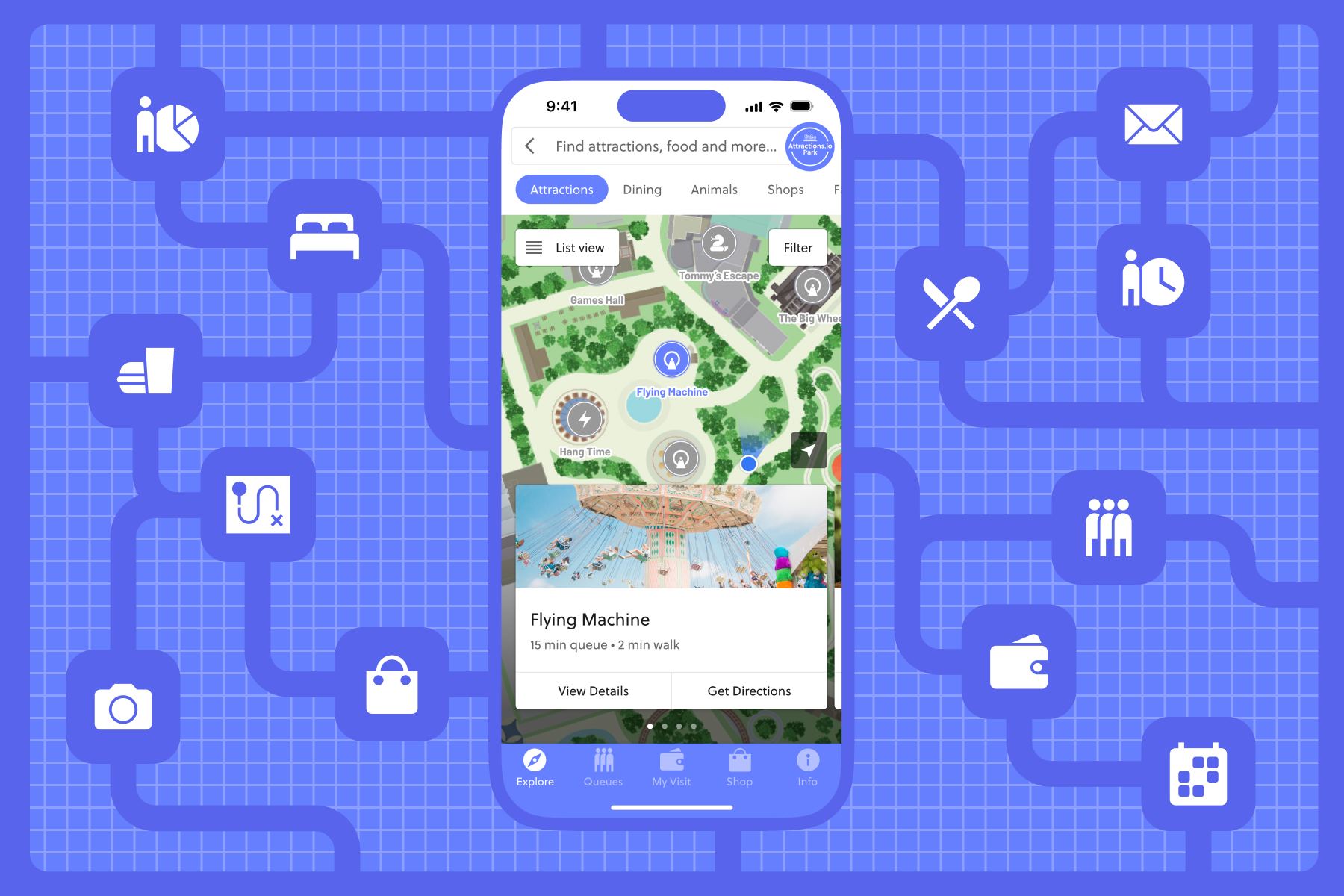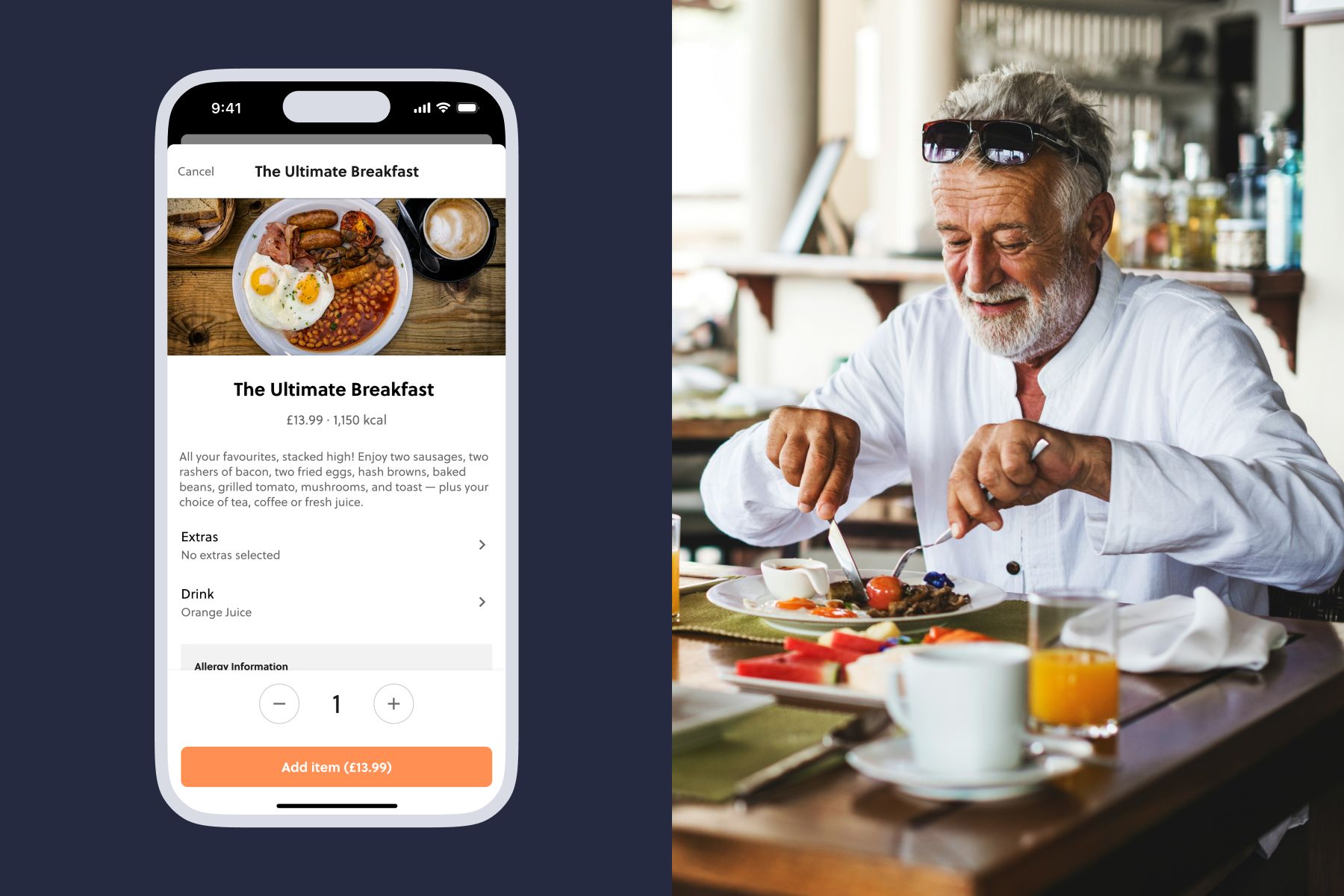.png)

Deep links can have their place. For low-utility connections, like linking to a third-party help page or a simple online menu, they are efficient and practical. But when you rely on them to connect your core systems, that’s where things start to break down. Guests feel the disconnect, operations stay siloed, and you lose the chance to create a seamless, profitable digital experience.
Deep links are URLs or triggers that direct users to a specific section of an app or website, and often to another system entirely. For example, a deep link to a website might take you straight to bbc.com/news/technology instead of the BBC homepage. And in an app, a deep link might open the Offers section of a shopping app rather than just launching its main screen.
They establish a basic one-way connection between an app and an external service, which requires minimal technical effort. Simple to create, with no coding expertise required. This simplicity makes deep links appealing for digital teams wary of complex projects, as they can be implemented quickly and with little risk.
When deep linking makes sense:
While full integrations are the backbone of a connected guest experience, they’re not always the right answer. Sometimes, a deep link is the smarter move, especially when the feature adds limited utility or doesn’t justify the time and cost of a native integration. For example, we often recommend deep linking to external systems like table reservations or third-party information pages, where a simple redirect delivers the same outcome without unnecessary complexity.
.png)
While deep linking can bridge systems on the surface, it doesn't create true connectivity. It's essentially a band-aid rather than a cure for system silos.
"Deep links get you started fast - but they leave gaps. Guests feel the disconnect, and you lose visibility that kills conversion and your ability to react. They're slower than native, look off-brand, and blind you to things like abandoned cart recovery or AI-driven upsells. Real integration fixes that. Uniting everything so you can personalise every moment, boost spend, and deliver the seamless experience guests expect." – Chris Rosillo, Lead Solutions Engineer, Attractions.io
Deep links might spare you some upfront development, but they don't eliminate the silos. Guests still feel the disconnect between systems, and you still lack unified data.
The pitfalls of an over-reliance on deep links include:
“We can send a message to guests who are here on site to say: ‘Hey, we have some new Whirzle flavours. Check them out,’’ and then see that conversion rate increase through the app. We’re seeing up to 20% of users engage with our promotional messages,” shares Tiff Kalejta, Digital Marketing Manager at Knoebels Amusement Resort.
.png)
Deep linking is not a sustainable substitute for a well-architected integration.
Real integration means making disparate systems work together as a cohesive, unified ecosystem. Instead of data only going one way, integrations utilise APIs and middleware to exchange data and trigger actions across systems in real-time. Done right, it transforms a patchwork of tools into a unified solution.
A great example of this comes from Alton Towers in the UK. Chris Wilson, E-commerce Manager, describes their approach:
"We view our mobile app as the foundation of our digital guest experience. Bringing everything into the Alton Towers App represents a key step in building the ultimate digital companion for our guests."
.png)
By unifying ticketing, ride queue times, photos, and more into a single app, Alton Towers has created a true digital hub. Keeping guests engaged, reducing friction, and opening new opportunities to drive revenue throughout their visit.
Crucially, integration doesn't mean replacing the existing systems. It means connecting them in smarter ways. Attractions.io's philosophy has always been to design around existing architecture. We know we're experts in mobile apps, not in selling tickets or running POS terminals – so we partner with best-in-class providers you already use. Our platform integrates seamlessly with your tech stack through well-defined integrations, rather than forcing you onto a proprietary, all-in-one solution.
This approach allows you to keep the systems that work for you, while we provide the glue that holds your digital journey together. In practice, this has meant integrating with a wide array of systems across the attractions industry: from ticketing solutions like VisiSoft, DigiTickets and Gateway, to CRMs such as Salesforce and Experian. We also support digital photography platforms like PomVom, payment gateways including Stripe and Adyen, and in-venue services like mobile food ordering such as our Cinchio integration which lets guests order food in-app for pickup.
"Our partnership enables clients to utilise an exceptional mobile app experience effortlessly integrated with our Galaxy ticketing solution. This collaboration is a triumph for all parties involved and exemplifies the potential of industry teamwork to provide outstanding service for our customers." – Michael Andre, CEO of Gateway Ticketing Systems
Butlin's Resorts (UK): Butlin's had experimented with digital tools before – by 2018, they offered guests an activity booking app, a separate food ordering app, and an online portal for free activities. The result was fragmentation: guests had to hop between three separate apps to plan their holiday, leading to confusion and friction.
.png)
In 2021, Butlin's partnered with Attractions.io to consolidate its services into a single, unified app. Integrating multiple systems (bookings, food & beverage, schedules) into a single guest experience platform. The integration project was ambitious, but it was delivered successfully – and the impact was immediate.
Within 8 months, the new app saw:
- 360,000+ downloads
- Achieved a 4.7★ App Store rating (up from 2.8★ previously).
- With 98% of all bookable activities pre-booked through the integrated app.
By making it easy for guests to do everything in one place, Butlin's not only delighted customers but also drove significant operational benefits (like guests spreading spending over months by booking add-ons in advance).
"Acting as an extension of our digital team, Attractions.io’s outcome-focused and consultative approach has enabled us to deliver the exact functionality we need under the tightest of timelines. Working with Attractions.io has helped us develop a long-term digital strategy that delivers the highest impact to our guests." – Jacqui French, Digital Product Manager (Apps) at Butlin's

With integrations having such clear benefits, how can digital leaders ensure their integration projects succeed? Here are a few best practices distilled from our experience working with hundreds of CIOs/CTOs in the attractions industry:
"The success of any integration comes down to people, not just technology. That’s why we have a dedicated in-house integrations team. They project manage, develop, test, and handle vendor relationships end to end. When everyone’s aligned and accountable, integrations stop being a headache and start driving real results.” — Pete O'Dare, Head of Product, Attractions.io.

When weighing deep linking vs. integration, it's clear that while deep links have their place, they're not a long-term strategy for an industry-leading guest experience.
Yes, integration projects require careful planning and the right expertise, but the payoff is transformative. Attractions that make their app the central hub of the guest experience see real results. One leading UK theme park saw a 197% increase in conversions after switching to a native checkout, and a £7 return for every £1 spent on their app. Integration delivers not just convenience, but lasting gains in guest satisfaction, spend, and operational efficiency.
Check out our Integration Library to see the extensive range of systems and vendors we connect with out-of-the-box – from ticketing and payments to CRM and beyond